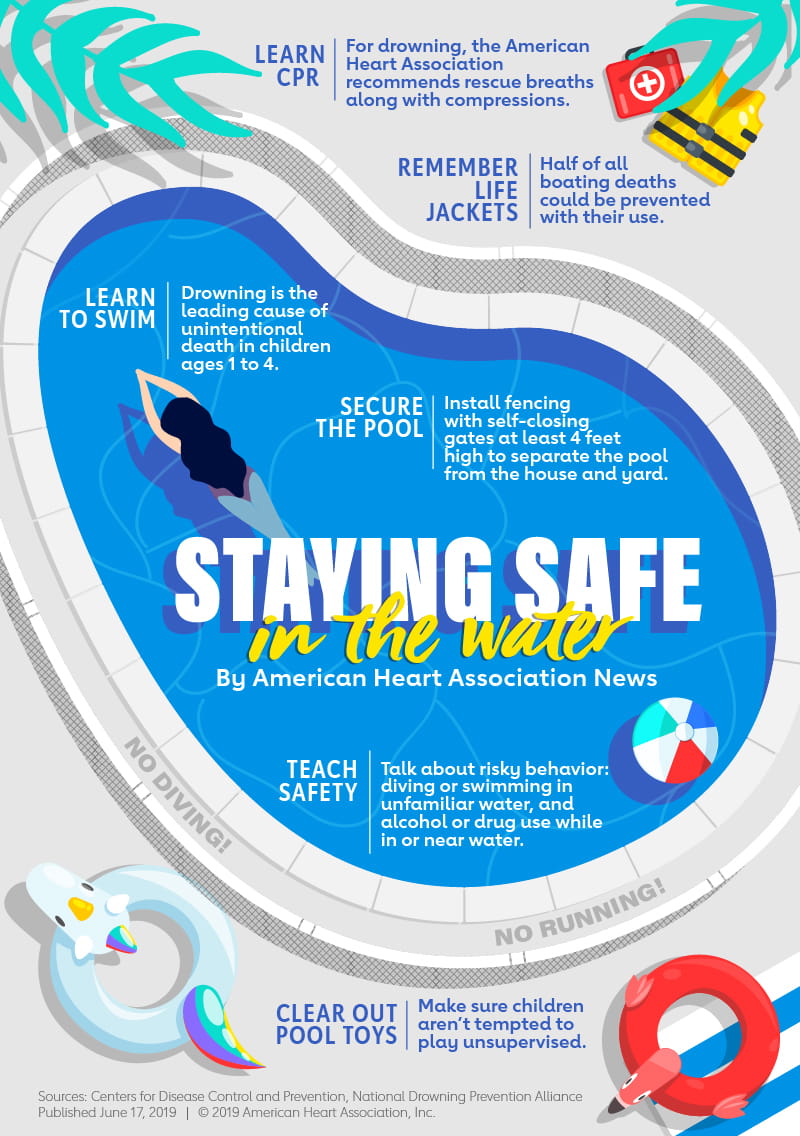Fun in the water can turn tragic in an instant, especially for children
By American Heart Association News

Nicole and Jonathan Hughes, a teacher and a physician with three young children, were acutely aware of the dangers of swimming pools and lakes. From fenced-off pools to life jackets to constant supervision, they did everything right.
Tragedy struck anyway.
Last June, as the family was about to head to an Alabama beach for an evening crab hunt, 3-year-old Levi somehow slipped out of their vacation house and found his way to the pool. In what seemed like an instant he was face down in the water, and couldn't be revived.
"We weren't neglectful, but somehow we failed to keep him safe," Nicole said. "Everybody knows about statistics, but the reality is nobody thinks it's going to happen to them."
Nicole, who lives in Bristol, Tennessee, has channeled her grief into activism, speaking out about a leading cause of preventable death among children: drowning.
"There's such a stigma that it's even hard to say the word," she said. "People say it's about 'water safety.' No, it's about drowning. We have to stop tiptoeing around it."

According to the Centers for Disease Control and Prevention, drowning is the No. 1 cause of unintentional death between ages 1 and 4, and the No. 2 cause between ages 5 and 9. The latest national data show 702 U.S. children under age 15 drowned in 2017.
The figures are not broken down by ethnic group, but minorities may be at even greater risk. The USA Swimming Foundation reports 64% of African American children and 45% of Hispanic children have low or no swimming ability, compared to 40% of white children.
The American Academy of Pediatrics recently updated its recommendations for preventing drowning in children, ranging from vigilance at bath time and emptying buckets and wading pools immediately after use to teaching children to swim and encouraging teenagers to learn CPR.
"We've got to do a better job," said Dr. Sarah Denny, lead author of the new guidelines. "Drownings continue to happen. Parents must be aware of the risks and take action to prevent drowning."
Denny, a pediatrician at Nationwide Children's Hospital in Columbus, Ohio, is particularly concerned about young children.
"Toddlers are curious, they're newly mobile, they're exploring their environment and they have no concept of the risk of water," she said.
She stressed that "layers of protection" are key to avoiding tragedy. Those layers include secure fences around pools, close supervision when children are around water, risk assessment and planning for children at every age level, and education, from the pediatrician's office to public service announcements.
One current announcement features Olympic gold medal skier Bode Miller and his wife Morgan, whose 19-month-old daughter Emmy drowned in a pool in California – on the same day that Levi Hughes died in Alabama.
"You have to be vigilant, as if it's a lion waiting to snatch your child," Morgan says in the video message.

Nicole Hughes wants to encourage that vigilance with a "Water Guardian" tag, complete with lanyard, that adults can hand off to one another to emphasize the responsibility of supervising children in the water. They're available from her new foundation Levi's Legacy.
"It's another layer of protection," she said. "But the most important goal is just awareness."
If a drowning emergency should occur, "every second makes a difference," said Dr. Vinay Nadkarni, a critical care expert at The Children's Hospital of Philadelphia.
His recommendations start with calling 911 immediately. Get the victim to a safe area "and assess for signs of life. If they're not breathing normally, start CPR."
For drowning victims, the American Heart Association recommends CPR with chest compressions and rescue breaths.
"Prevention is the best cure," but a devastating accident can still happen, Nadkarni said, which makes knowing CPR no less important than a good fence.
"If you do not know CPR," Nadkarni said, "you should not have a pool."
If you have questions or comments about this story, please email [email protected].





